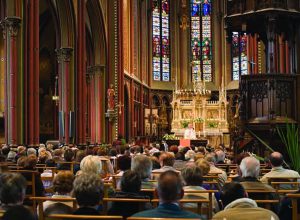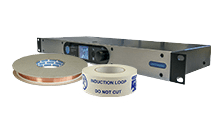
- Communicate directly with hearing aid users
- Enhance visitor experience
- Provide consistent signal coverage in large and complex areas
Most hearing aid users would say that when they use their aids in one-to-one conversations the devices work very well. Difficulties arise when a level of ambient noise is too great, or distance between speaker and listener is increased, as is often the case in a church or cathedral.
These problems are exacerbated if an assistive listening system in use, has been poorly specified or installed. Problems are particularly notable when:
- there are large and complex room structures
- multipurpose rooms are in use, for example in partitioned assembly halls
- overspill can cause interference or broadcast of signal outside of room or building
- metal is present in building structure or room contents
Ampetronic™ hearing loops:
- offer direct communication to users via their existing hearing aid without a need for additional receivers
- makes hearing aid users listening experience much more enjoyable
- allow freedom of movement, by ensuring a consistent signal throughout looped area
- reduces overspill, so reducing interference, or possibility of broadcasting of sensitive information outside of room or building
- minimises effects of signal loss to metal in building structure
- can be integrated into new builds, or retro-fit into existing structures
For more information on hearing loop design to meet regulatory Standards for hearing loop installations, contact our friendly and knowledgeable team on +44 (0) 1636 610062 or email sales@ampetronic.com.

